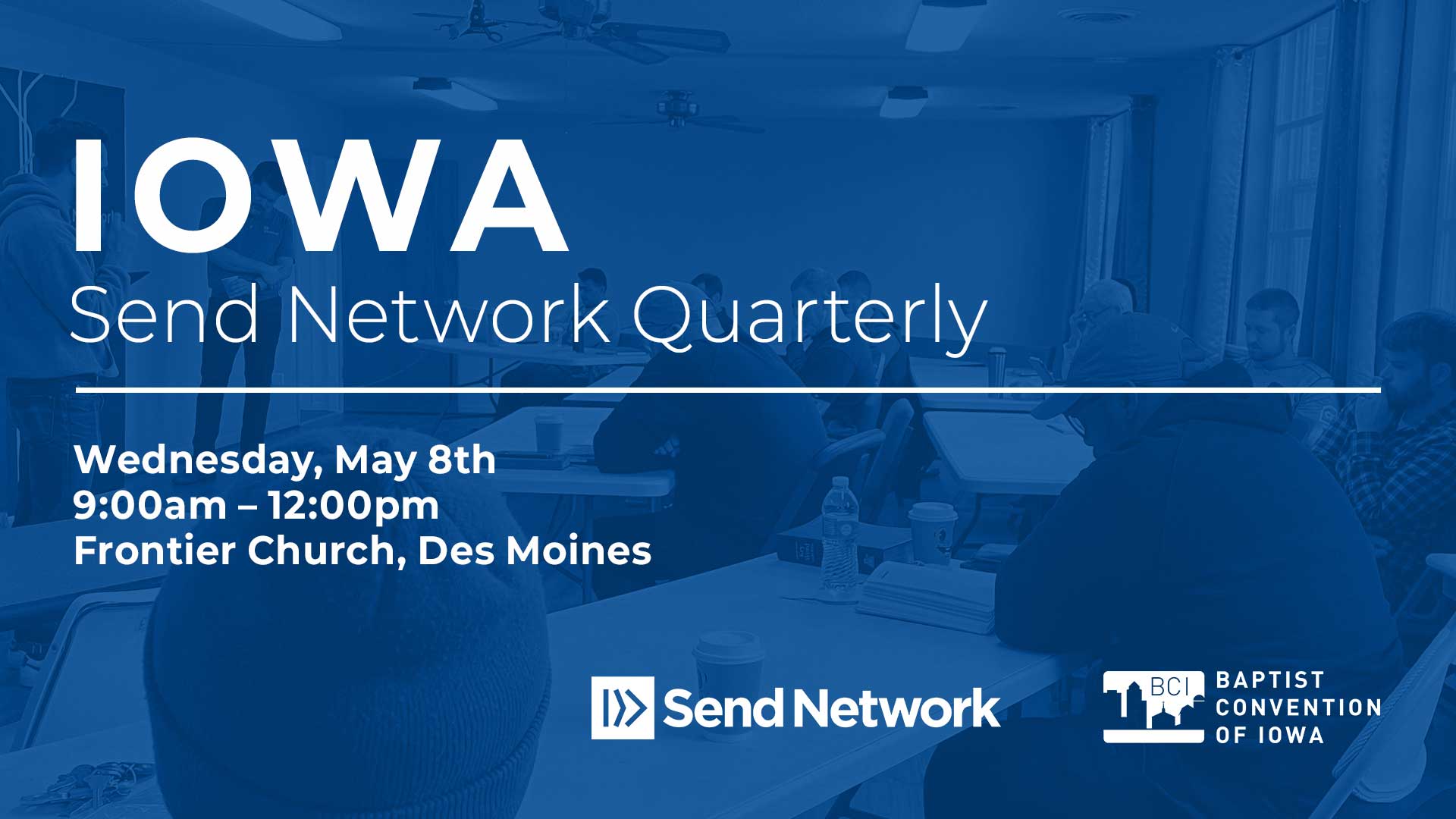By David E. Prince
NOTE: The 2015 ERLC Leadership Summit will address “The Gospel and Racial Reconciliation” to equip Christians to apply the gospel on these issues with convictional kindness in their communities, their families, and their churches. This event will be held in Nashville on March 26-27, 2015. To learn more go here.

On Aug. 28, 1963, from the steps of the Lincoln Memorial, Martin Luther King Jr. took his place alongside Abraham Lincoln as a preeminent shaper of American culture when he delivered his “I Have a Dream” speech to 250,000 civil rights supporters. The most oft quoted line of the famous speech is, “I have a dream, that my four little children will one day live in a nation where they will not be judged by the color of their skin but by the content of their character. I have a dream today!” Some have appropriated King’s words (wrongly I think) to argue that a colorblind society should be our ultimate goal.
King was arguing for racial equality, which does not necessitate a colorblind society. He uttered those words in a context where sinister Jim Crow laws legally codified the message that white skin meant a man was inherently superior and black skin meant a man was inherently inferior, even something less than a man. King’s rhetorical masterpiece publicly exposed the hypocrisy of America: A country founded in liberty as the land of “freedom and justice for all,” subjugating a people for no other reason than the shade of their skin.
“Separate but equal” was the bankrupt cry of segregationists opposing the Civil Rights Act of 1965. The segregationist mindset has been largely repudiated in American culture. Tragically, the one time in which America still functions as a segregated society is on Sunday morning. One article, “Race, Diversity, and Membership Duration in Religious Congregations,” published in Sociological Inquiry (July 2010) found that 90 percent of congregations in the U.S. are segregated (a single racial group accounts for more than 80 percent of membership). That Sunday morning worship is the most segregated hour of Christian America has become cliché, but it is largely true. The usual defensive response when these facts are mentioned is that we all believe in racial equality, but we cannot help the fact racial groups have different preferences when it comes to worship, preaching and how church is done. In other words, we may be separate but we’re equal, so it’s nothing to worry about.
Often pastors seek vindication for the lack of congregational ethnic diversity in a toleration ethic. The attitude seems to be: If someone of another race wants to attend our church, we would be glad to have them, so there is no problem here. In this kind of thinking, tolerating racial and ethnic diversity amounts to doing our Christian duty. However, a genuinely Christian attitude toward racial and ethnic diversity is not one of toleration, but celebration. The human race was made in the image of God (Gen. 1:27, Acts 17:26). Just as we are to join him in delighting in His diverse design of the created order, we are also to join him in delighting in His diverse design in his image bearers. The entire human race shares a common descent as the fallen children of Adam (Gen. 3:17, 1 Cor. 15:22). The church of the Lord Jesus Christ is made up of redeemed image bearers described as “one new man” (Eph. 2:15), a new race and ethnicity of people whose identity is found in being united by faith to Christ (Eph. 2:11-22).
The church of Jesus Christ lives between the times as elect exiles: The kingdom has been inaugurated by Christ, but awaits its final consummation. Thus, we have already been reconciled with one another in Christ, but we still await final consummated reconciliation. The glory of the triumphant eschatological kingdom of Christ will be demonstrated by the multi-ethnic diversity of worshippers who exult, “Worthy are you to take the scroll and to open its seals, for you were slain, and by your blood you ransomed people for God from every tribe and language and people and nation” (Rev. 5:9). The inclusion of ethnically diverse peoples in the household of God is God’s intention, fulfilling his gospel promise (Gen. 3:15, Gen. 12, 15, Ps. 67, Acts 2, Rom. 4, Gal. 3, 4, Eph. 2, 4, Rev. 5, 7, 14). Culturally derived worldviews which root identity in race and ethnicity are directly at odds with the gospel of Jesus Christ and must be subordinated by those who truly say, “Jesus is Lord.” As we live between the times, a vital way that local churches reflect the glory of his kingdom is through being intentionally multi-ethnic outposts of the kingdom who celebrate diversity in Christ, including diversity of skin color.
Issues related to ethnicity are not incidental to the unfolding gospel story in redemptive history—they are fundamental. For instance, sociologist of religion, Rodney Stark notes that the city of Antioch, during days of Roman rule, was divided into 18 different and intensely antagonistic ethnic groups with almost no social integration (The Rise of Christianity, 157-158). It was followers of Christ in the multi-ethnic church of Antioch (Jews, Africans, Arabs, Greeks, Romans, Syrians, Asians) who were first called Christians (Acts 11:19-26) and who took the gospel of Jesus Christ around the world (Acts 13:1-3). The Greco-Roman world stood in awe of the people who formerly hated each other because of ethnic distinctions, who now loved each other as family and worshiped and served together in the name of Jesus. They knew the members of the church of Antioch were disciples of Christ because of the way they loved one another (John 13:35).
Too many white American evangelicals fail to do justice to the ethnic and cultural diversity of the Bible, particularly as it relates to the role of black Africans in the biblical narrative. The pictures of Jesus that the dominant white evangelical culture hangs in churches and in their homes look extraordinarily like a white man who could’ve been born in the heartland of America. Thus, white evangelicals also tend to read their Bibles as if it tells a white Western story. When we re-create Jesus and the biblical story in our own image, we ignore the gospel implications for how we are to understand racial and ethnic diversity as a cruciform community.
Misreading the Bible as a white Western story also creates an unwitting white Messiah, and paternalistic attitude toward living out the demands of the gospel in our churches. This imperialistic ethos rightly turns off our non-white brothers and sisters in Christ. Without any conscious intent to do so, white evangelicals often communicate that living out the gospel means absorption into white evangelical culture. In my experience, black evangelicals have been far more willing to humble themselves and learn from white evangelicals than the other way around. Often well-intentioned social ministry in our white evangelical churches proceeds with an aura of evangelical aristocracy, albeit a benevolent one toward needy ethnic people.
In places where racial and ethnic diversity is celebrated in the church rather than tolerated, the goal of Christian colorblindness is rejected. Our differences are now seen in Christ, as markers of God’s expansive providential grace. The gospel does not erase our cultural, racial and ethnic distinctions, but rather reinterprets every aspect of our story in light of the gospel story (Rev. 21:24). The Christian community trades ethnocentricity for Christocentricity and is liberated to celebrate the breadth and length, height and depth of the love of Christ (Eph. 3:14-21).
When a congregation positions itself as simply tolerant of things like racial diversity, interracial marriage and transracial adoption, the fault lies with an anemic pulpit. Racism is a gospel issue. How many conservative evangelical pastors would be mortified upon hearing about a pastor who refused to speak out against same-sex marriage for the risk of upsetting some people, while they tiptoe around issues related to race and ethnic diversity because they fear congregational reaction? Pulpit cowardice may be a church growth strategy, but it is not a biblically faithful one.
My friend and colleague, Russell D. Moore has said, “Jim Crow is dead. Jesus is alive!” He is right and we need to celebrate that truth in our pulpits. We also need to exorcise Jim Crow’s ghost that tragically still lingers in too many churches. “Separate but equal” was empty rhetoric used to defend cultural racial segregation in the 1950s and 60s. And it still is empty rhetoric when it is used to defend segregated churches today. Pastors, you do not need a platform at the Lincoln Memorial to do something about racial and ethnic segregation today, you already have the gospel and a pulpit.
Download the 2015 Bulletin Insert

Find More Resources at ERLC.com/Race
David E. Prince is the pastor of preaching and vision at Ashland Avenue Baptist Church and a professor of Christian preaching at the Southern Baptist Theological Seminary.







